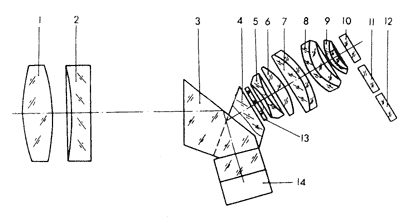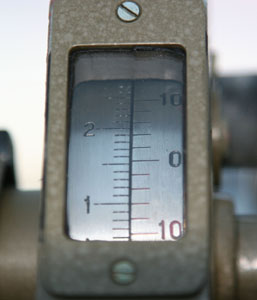
Photo 1 The casings and the mounting

Photo 2 The whole view
 Photo 1 The casings and the mounting |
 Photo 2 The whole view |

| Size (mm) | Weight (kg) | |
| Binocular casing |
Maximum length: 385 (when hood are extended 458) |
21 |
| Wood box | 640 x 490 x 430 | 16 |
| Tripod length | 930 to 1480 | 5 |
 Photo 3 The instrument in the wood box and the tripod |
 Photo 4 Attachments. Some parts are not unwrapped. |
 Photo 5 Attachments wrapped in oilpaper |
 Photo 6 The binocular viewed from the underside. A pair of round parts is desiccators |
 Photo 7 A lens hood viewed from the underside |
|
 Photo 8 Azimuthal limb with vernier. The reading is 514.4, i.e. 308.64 degrees. |
 Photo 9 Altitudinal limb with vernier. The reading is 15.4, i.e. 9.24 degrees. |
